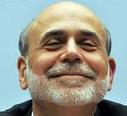
Find below the latest from Westpac’s Elliot Clarke on the US:
Throughout the past year, we have continued to expect US growth to disappoint. Our December 2012 Market Outlook publication included a 1.7% year-average forecast for 2013 as a whole and a 2.1% annualised forecast for Q3. Since that time, even-weaker-than-anticipated momentum resulted in the Q3 forecast being whittled down to 1.7% annualised; and, also impacted by October’s shutdown, our year-average forecast for 2013 has been lowered to 1.5%.
The shutdown-delayed data for September released over the past week has reaffirmed our position. Of the data received, durables orders and shipments, retail sales and pending home sales have been the key markers for assessing underlying momentum ahead of the shutdown. Further, the consumer confidence data (for October) has also given credence to concerns over the broader impact of the shutdown on growth, outside of the immediate impact from reduced government spending.
For durables orders – a partial indicator for business investment – September was a poor month. Core orders (ex defence and aircraft) fell 1.1%, taking the three-month average change down to –2.2%. That compares to +2.1% in June and +5.0% in March. Core shipments fell by a more modest 0.7% through Q3, versus –0.2% in Q2 and +1.4% in Q1. Collectively, this points to (at best) weak investment growth in Q3 and a continuation of this trend in Q4. The risks are that we see a more material deterioration in investment in Q4, driven by a fall in business confidence; and, owing to the looming fiscal uncertainty of Q1 2014, that we see this weakness persist into early 2014.
Turning to households, September retail sales were broadly in line with expectations, with total sales down 0.1% and sales ex autos up 0.4%. That being said, the annual growth trend leaves much to be desired. Over the past three months, annual growth in total sales has decelerated from 6.0%yr to just 3.2%yr; ex autos, annual growth has slowed from 4.4%yr in June to 2.8%yr. This soft, decelerating nominal trend points to weak real household spending. This is all the more true when one considers that the worst performing (and most important part) of household consumption (services) is not included in retail sales. As at August, Q3 growth in services looked to be flat.
Pending home sales 5.6% decline in September also gives cause for concern, not only for the market for existing homes (under duress from higher mortgage rates), but also because the house price gains of the past year have been a key support for consumer sentiment. Already impacted by October’s fiscal malaise – the conference board measure fell 9pts in October after edging lower from June’s cycle high of 82.1 – a deterioration in the housing market could impact household confidence and further reduce households’ desire to spend.
Given the above, the FOMC’s October statement is best characterised as optimistic. While they clearly highlighted the deterioration in momentum in the housing market, their comment on household consumption and fixed investment was notably vague. Yes household consumption “advanced”, but it looks to have been at a very modest pace, with real spending likely doing little more than marking time. On investment, while we also believe investment rose in Q3, as highlighted by the durables data above, the risk is that it stalled or possibly fell.
In terms of the outlook, the FOMC remained non committal in October. This seems to have been seen by some as evidence that there is still a chance of a near-term taper. We see the odds of this as long to say the least.
In the lead-in to the September no-taper decision, the FOMC was surprised by the duration and scale of the fiscal drag as well as the soft tone of underlying momentum. This was made clear in their decision to lower their forecasts at that meeting, as we had expected. As we look forward to the December meeting, we find ourselves in a similar situation. Based on the FOMC’s September projections, they are anticipating annualised growth of around 2.5% through H2. If, as we suspect, growth disappoints in Q3, growth of more than 3% annualised will be required in Q4 to achieve the FOMC’s 2013 forecast of 2.15%yr. Given the soft underlying momentum apparent and the likely impact of the shutdown (which we are yet to see in the data), it seems highly likely that the FOMC will be forced to revise down their 2013 forecasts yet again, casting further doubt on their expectations for 2014.

